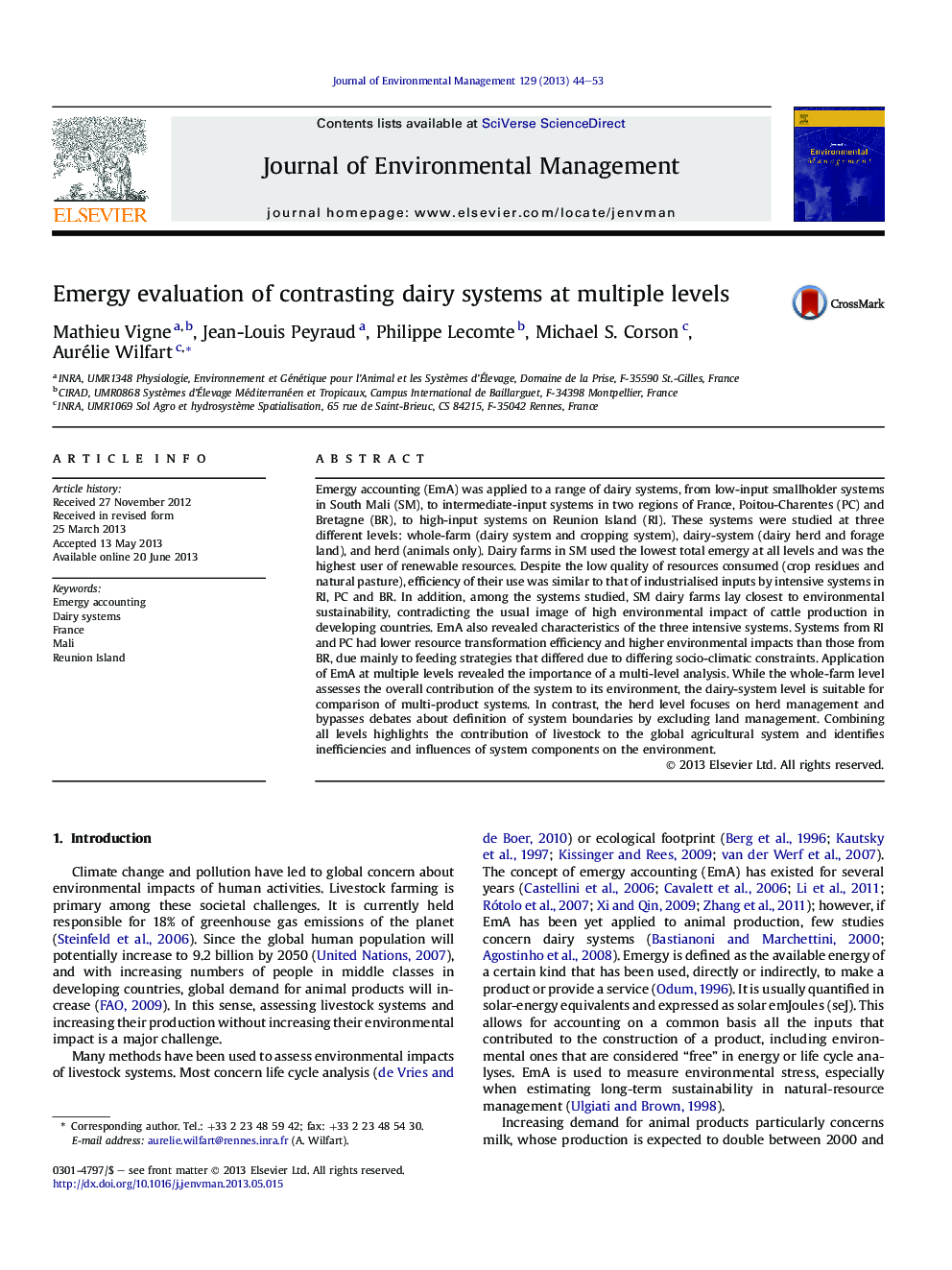| کد مقاله | کد نشریه | سال انتشار | مقاله انگلیسی | نسخه تمام متن |
|---|---|---|---|---|
| 1056143 | 1485283 | 2013 | 10 صفحه PDF | دانلود رایگان |

• Emergy accounting was used to assess contrasting dairy systems.
• High-input systems had slightly higher efficiencies than low-input systems.
• Grazing systems were the most efficient intensive systems in developed countries.
• Emergy accounting at several levels showed the importance of multi-level analysis.
Emergy accounting (EmA) was applied to a range of dairy systems, from low-input smallholder systems in South Mali (SM), to intermediate-input systems in two regions of France, Poitou-Charentes (PC) and Bretagne (BR), to high-input systems on Reunion Island (RI). These systems were studied at three different levels: whole-farm (dairy system and cropping system), dairy-system (dairy herd and forage land), and herd (animals only). Dairy farms in SM used the lowest total emergy at all levels and was the highest user of renewable resources. Despite the low quality of resources consumed (crop residues and natural pasture), efficiency of their use was similar to that of industrialised inputs by intensive systems in RI, PC and BR. In addition, among the systems studied, SM dairy farms lay closest to environmental sustainability, contradicting the usual image of high environmental impact of cattle production in developing countries. EmA also revealed characteristics of the three intensive systems. Systems from RI and PC had lower resource transformation efficiency and higher environmental impacts than those from BR, due mainly to feeding strategies that differed due to differing socio-climatic constraints. Application of EmA at multiple levels revealed the importance of a multi-level analysis. While the whole-farm level assesses the overall contribution of the system to its environment, the dairy-system level is suitable for comparison of multi-product systems. In contrast, the herd level focuses on herd management and bypasses debates about definition of system boundaries by excluding land management. Combining all levels highlights the contribution of livestock to the global agricultural system and identifies inefficiencies and influences of system components on the environment.
Journal: Journal of Environmental Management - Volume 129, 15 November 2013, Pages 44–53